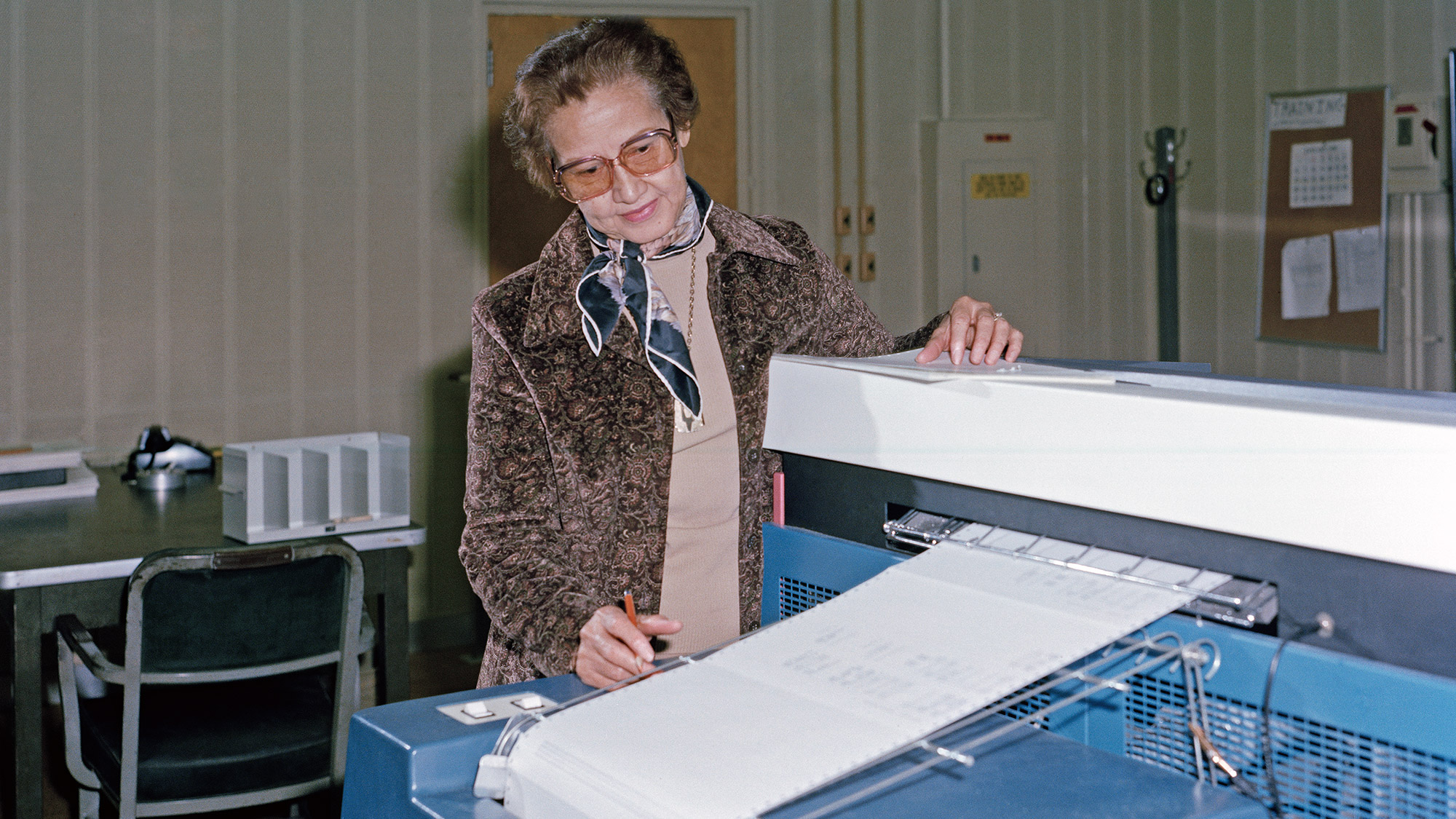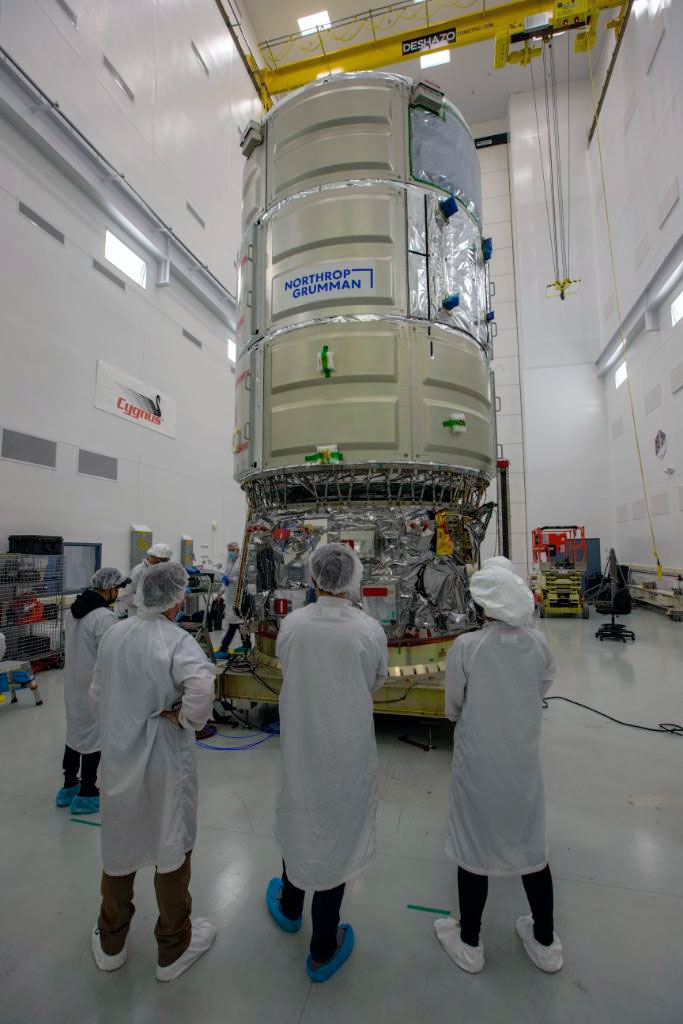Northrop Grumman Antares rocket launches Cygnus cargo ship to space station for NASA
It's headed to the International Space Station.
WALLOPS ISLAND, Va. — A Northrop Grumman-built Cygnus cargo ship lifted off from Virginia on Saturday (Feb. 20), carrying vital supplies for astronauts on the International Space Station.
Perched atop a two-stage Antares rocket, the uncrewed Cygnus NG-15 spacecraft blasted off from Pad 0A at the Mid-Atlantic Regional Spaceport at NASA's Wallops Flight Facility here at 12:36 p.m. EDT (1736 GMT).
The craft is hauling more than 8,200 lbs. (3,719 kilograms) of cargo that include scientific equipment, fresh food and supplies for the seven astronauts on board the space station. It's also packed with new hardware and spacewalk equipment.
The 139-foot-tall (42.5-meter) Antares rocket lifted off right on time, at the beginning of a planned 5-minute window. It's Cygnus NG-15 cargo ship is named after Katherine Johnson, the trailblazing NASA mathematician who helped make John Glenn's historic orbital flight — the first by an American astronaut — possible. Now, 59 years later, the S.S. Katherine Johnson embarks on her own flight to space on the 59th anniversary of Glenn's Friendship 7 Mercury flight.
Video: Watch the Antares rocket launch of Cygnus NG-15!
Related: Private Antares rocket & Cygnus explained (infographic)




History of NASA: $22.99 at Magazines Direct
Discover the story of how and why NASA was created, its greatest triumphs, darkest days, and of the times it exceeded all possible hopes. A tale of adventure, heroism and resourcefulness, learn of the space agency's greatest achievements and how — over six decades — the organization has consistently and tirelessly devoted itself to its founding principle: that "activities in space should be devoted to peaceful purposes for the benefit of all humankind".
The NG-15 mission is Northrop Grumman's 15th operational resupply launch to the space station since 2014 and marked the 4th Antares to fly in the 230+ configuration.
The rocket's first stage is powered by two Russian-made RD-181 engines fueled by rocket-grade kerosene, producing 864,000 pounds of thrust at liftoff. The first stage separated from the rocket's upper stage just over three minutes into flight.
Breaking space news, the latest updates on rocket launches, skywatching events and more!
Shortly after, the payload fairing jettisoned, leaving the Cygnus exposed to space. Powered by a solid-fueled upper stage, the Cygnus was deposited in its preliminary orbit and ready to begin its journey to the space station. The cargo craft will spend two days chasing down the orbital outpost before berthing to the station with the help of a robotic arm.
Astronaut Soichi Noguchi of the Japan Aerospace Exploration Agency will capture the vessel on Monday (Feb. 22) at about 4:40 a.m. EST (0940 GMT), with NASA astronaut Mike Hopkins serving as backup. The craft will remain at the station for approximately three months, after which it will detach itself and burn up upon reentry into the Earth's atmosphere.
Hidden figures
Northrop Grumman makes both the Antares rocket and the Cygnus spacecraft. The company has a tradition of naming its spacecraft after fallen heroes who have made a significant contribution to human spaceflight.
In this case, the company is choosing to honor the late Katherine Johnson, who died at the age of 101 nearly a year ago on Feb. 24, 2020. Johnson worked as a human computer whose trajectory calculations were critical to NASA's early success with human spaceflight, in particular Glenn's orbital flight.
“It’s our tradition to name each Cygnus after an individual who’s played a pivotal role in human spaceflight, and Mrs. Johnson was selected for her hand-written calculations that helped launch the first Americans into space, as well as her accomplishments in breaking glass ceiling after glass ceiling as a Black woman,” said Frank DeMauro, vice president and general manager for tactical space at Northrop Grumman said on Friday (Feb. 19).
Years after her retirement, Johnson's work was highlighted in the book "Hidden Figures," and later the movie of the same name starring Taraji P. Hensen as Johnson. Johnson received a congressional medal of freedom and the congressional gold medal from President Barack Obama for her work at NASA.
Related: NASA facility dedicated to mathematician Katherine Johnson
Special delivery
Tucked inside the Cygnus is a bevy of time-sensitive cargo items, including a supply of fresh food for the astronauts on the space station. During a prelaunch briefing on Friday, NASA officials said they were sending up some treats for the crew members of Expedition 64, including salmon, hard salami, parmesan cheese, caramel hard candies and other perishable items.
"We want to keep the crew happy, because a happy crew is a productive crew for science," David Brady, associate program scientist for the International Space Station, said prior to launch.
Also inside the Cygnus is a brine processor assembly for the space station's water recycling system, which converts urine into fresh drinking water. NASA says the new processor will enable more water to be recovered from urine than with the current equipment on station. The agency says this is a key piece of hardware to help meet the requirements for future long-duration missions to the moon and eventually Mars.
"Long-duration crewed exploration missions require about 98% water recovery, and there is currently no state-of- the-art technology in brine processing that can help achieve this goal," NASA officials wrote in a fact sheet. "This brine processor system plans to close this gap for the urine waste stream of the space station."
The equipment works by using special membranes to separate contaminants from the brine, allowing water vapor to flow into the cabin atmosphere, where a condenser will capture it and filter it into the station's water system.
Also onboard the Cygnus will be a new sleeping pod for the Expedition 64 crew. Currently there are five astronauts in the U.S. segment — four Crew-1 astronauts who launched in November on board a SpaceX Crew Dragon, and Kate Rubins who flew on a Soyuz last October — with only four sleep stations. Hopkins, the Crew Dragon commander, has been sleeping in the capsule since launching in November. Three Russian cosmonauts round out the station's crew.
Cygnus also is ferrying spare parts and equipment for the space station's toilets, and equipment for upcoming spacewalks.
Weird science
The bevy of research experiments brought up on the NG-15 mission will researchers to better understand how microgravity affects the human body as well as manufacturing processes. One investigation will look at the construction of protein-based artificial retinas on station.
Designed by LambdaVision, the experiment will use a layer-by-layer process to manufacture artificial retinas in space. The hope is that the "retina" can then be implanted into the eye of a patient suffering from degenerative retinal diseases such as retinitis pigmentosa or macular degeneration.
One high-tech experiment aboard is the Spaceborne Computer-2, a collaboration by Hewlett Packard Enterprise (HPE) and Microsoft to bring cloud computing and artificial intelligence technology to the International Space Station. Microsoft will link its Azure Space Platform to the computer to "deliver edge computing and [artificial intelligence] capabilities'' to the station, according to HPE.
Another experiment will measure muscle strength in multiple generations of worms, to better understand the biological changes that happen during spaceflight. Led by Siva Vanapalli, the experiment will look at how the muscle strength in worms changes overtime during spaceflight.
About 1,000 worm larvae are en route to the space station, tucked inside the Cygnus as part of the Micro-16 investigation. Once on station, the worms will produce many offspring during their trip, allowing researchers to look at multiple generations. They're also sending a device called NemaFlex, which is designed to measure how much force the worms exert.
Vanapalli is hoping that the device will enable the team to measure changes in the worm's strength which can be beneficial to drug development as well as help researchers improve astronaut health.
Also on board the Cygnus are several student experiments including the Magnitude.io experiment that will help engage students in STEM projects with the help of bitmoji stickers. The experiment, called ExoLab 8, is Magnitude.io's eighth investigation sent to the space station.
Mission participants (which will include students from Kindergarten through college level) will attempt to grow red clover plants at home and in their classrooms to act as a ground control experiment, and compare growth rates to similar plants grown in space.
Online activities will be led by an Astro_moji teacher — Linwood Elementary Technology teacher, Lisa Turney. Her likeness will be turned into a bitmoji who will teach students from space via her bitmoji avatar. The experiment will rely on a SpaceTango CubeLab that will facilitate plant growth.
"We are taking distance learning to a whole new level: 250 miles above the Earth to an orbital classroom," Magnitude.io CEO Ted Tagami wrote in a news release. "While the pandemic disrupted many learning experiences, our mission participants will remember 2021 as the year they went to space."
Follow Amy Thompson on Twitter @astrogingersnap. Follow us on Twitter @Spacedotcom or Facebook.

Amy Thompson is a Florida-based space and science journalist, who joined Space.com as a contributing writer in 2015. She's passionate about all things space and is a huge science and science-fiction geek. Star Wars is her favorite fandom, with that sassy little droid, R2D2 being her favorite. She studied science at the University of Florida, earning a degree in microbiology. Her work has also been published in Newsweek, VICE, Smithsonian, and many more. Now she chases rockets, writing about launches, commercial space, space station science, and everything in between.



